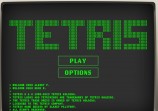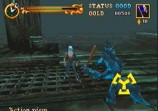
Gamers have been joining forces since the early days of the internet. In the 90s, LAN parties brought players physically together-to network, share their experiences, and most importantly, to compete against one another. Titles like StarCraft and, later, Halo popularized the concept. Then, as the internet evolved, LANs gave way to truly expansive multiplayer experiences like the MMORPG juggernaut World of Warcraft, where competing online was a single click away.
Fast forward to the present day, and the desire to play with - and against - one's peers hasn't changed. Modern gamers are just as intent on interacting as their predecessors, and they're equipped with an arsenal of tools to do. From Twitch to TeamSpeak, there's a multitude of ways to goad your opponents, rally your troops, and celebrate hard-earned victories.
As the web prepares to make another leap forward thanks to Web3, maximizing player interaction is paramount. One means of facilitating this is through the formation of guilds, an old concept with a new twist.
Player Power in the World of Web3
Players are the lifeblood of the video games industry, but it doesn't always feel that way. All too often, the needs of gamers are overlooked by big studios in pursuit of profits and protectionism. Games stores list and delist titles on a whim; app stores maintain a walled garden that excludes many popular games; and players effectively lose everything they've worked so hard to achieve in a game the moment they move on to the next.
Web3 promises to ameliorate many of these problems by empowering players to choose their destiny. Not in the gaming environment itself (that's always been a feature) but in terms of how they access the game and control their data, including their character and the items they earn while playing.
The use of NFTs, blockchain, cryptocurrency, and distributed storage has spawned a system that assigns players ownership of the assets they earn, together with the ability to resell these if desired. Powered by these web3 primitives, a new breed of games is emerging known as play-and-earn. The object of the game is still the same as it always was - to win - but the definition of winning has changed.
In web3, hardcore gamers intent on leveling up their character as quickly as possible and equipping it with the best gear to expedite their quest can do so. Players who are in it for the financial rewards, rather than just the bragging rights, however, can adopt a different strategy. They might elect to spend their time trawling dark dungeons in search of rare loot boxes to resell to their peers, or they might craft a powerful alchemic spell that spawns a unique item sure to be highly coveted. Then, they can take that item, represented as an NFT, and sell it on the secondary market for a handsome profit.
The Big C
Crypto features prominently in web3, with crypto tokens being used for in-game currency, NFTs, and cryptographic ledgers routing all transactions. There's another C that features prominently in the play-and-earn world of web3 however - community. This community-centric model is best embodied in the rise of guilds, player collectives established to achieve shared goals.
Games such as Axie Infinity and Aavegotchi have served as trailblazers that demonstrate the power of guilds in action. The former, which was the first breakthrough web3 game, saw communities, many hailing from developing countries such as the Philippines, coalesce. Axie owners lend their creatures to guilds, whose members train them by entering them into battles to earn SLP tokens.
The Aavegotchi community, meanwhile, is broken into guilds themed around areas on the metaverse map where members own land. By teaming up, guild members can maximize their ability to channel Alchemica, which can be sold or used to upgrade installations.
Today, every new web3 game worth its salt has a corresponding guild to organize and incentivize its players. UniX Gaming, for example, is building an entire web3 gaming and metaverse ecosystem and gamers are at the heart of its strategy. With over 200,000 Discord members, and streamers with a combined audience of 27M, its community is essential for connecting its many gaming partners to an engaged audience.
Guilding the Lily
As computing power increases and AI becomes ever more sophisticated, guilds play another unsung role in the evolution of web3: authentication. They provide reassurance that players are competing against other human players, complete with the interaction that is a crucial component of gameplay. When properly incentivized, guilds also ensure that all members are remunerated for their contribution while doing their bit to advanced shared goals.
Tools such as blockchain, non-fungible tokens, and distributed storage are driving the transition to web3. But it is the players who will determine whether this new system for asset ownership and earning really takes off. Savvy web3 developers recognize the logic in encouraging their most passionate players to have a say in key decisions, from the allocation of resources to the measures taken to exclude bots. When properly optimized, guilds make web3 gaming better for everyone.





